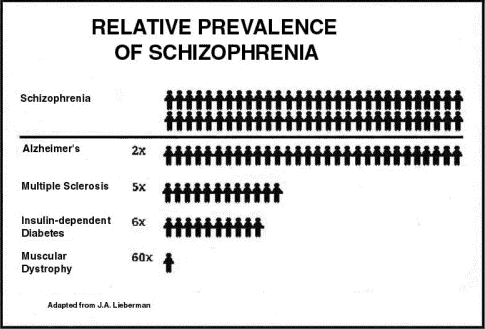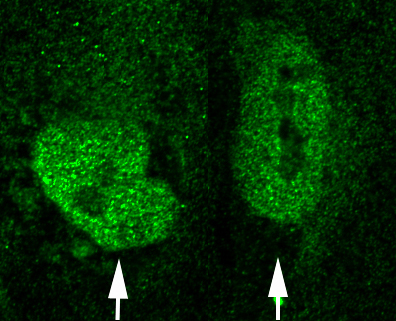
Comparing the prevalence of Schizophrenia with other diseases. From Schizophrenia.com.
Schizophrenia is a mental illness that is characterized by delusions and hallucinations. Because the symptoms affect the cognitive and social functions of an individual, and the prevalence of schizophrenia is high, psychiatrists and psychologists are doing researches to find origins of this illness in order to develop a better treatment for this illness. A recent stem cell research at University at Buffalo revealed that schizophrenia is induced by defects in an important genomic pathway in a stem cell. These defects in the pathway can be responsible for onset of the disorder later in life.

The picture shows that fibroblast growth factor receptor 1 (FGFR1) interacts with multiple genes that are linked to schizophrenia. Arrows point to the nuclei of human embroynic stem cells. Picture from: University at Buffalo, News Centre.
Researchers found an genomic explanation to the causes of schizophrenia using a mouse model. The head researcher, Michal Stachowiak, mentioned that this can lead to a generalized approach to treat schizophrenia if it is sure that a malfunction of a common genomic pathway is the cause for the disorder. He also proposed that possible methods that would stop the illness from developing could be created in the future. I have a high hope for the development of better treatments and even a cure for schizophrenia based on the current understanding of schizophrenia and technologies.
– (Shirley) Yu Chen
